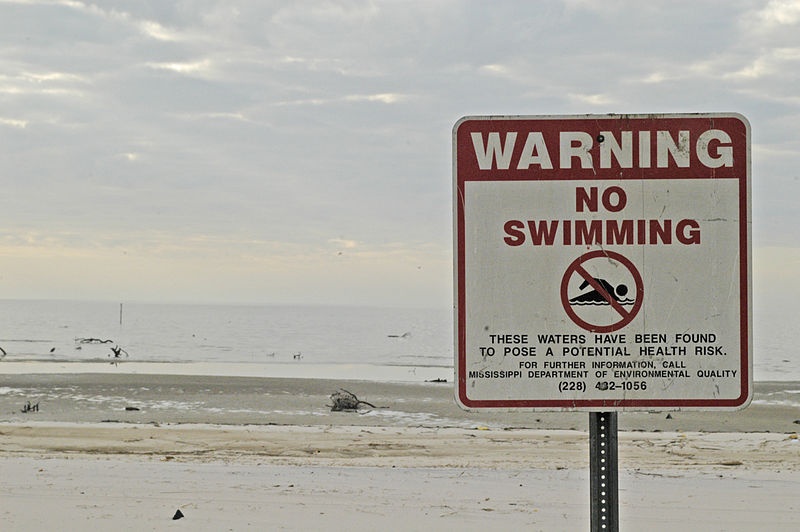Water pollution a problem for Southern beaches

With Americans flocking to beaches for summer vacation, an environmental advocacy group has released its annual report on water quality -- and finds problems with bacteria levels exceeding health standards at popular swimming spots across the South, particularly along the Gulf Coast.
"Testing the Waters," the Natural Resources Defense Council's 23rd annual analysis of water quality and public notification data from U.S. coastal beaches, reports that the number of beach closing and advisory days nationally totaled 20,120 in 2012. That's a drop of 14 percent from the previous year, which NRDC attributes to less rainfall.
More than 80 percent of closings and advisories were issued because bacteria levels in the water exceeded public health standards, indicating the presence of human or animal waste. The largest known source of pollution was stormwater runoff, accounting for 28 percent of closing and advisory days.
"Sewage and contaminated runoff in the water can spoil a family vacation real fast, turning a day of lounging at the beach into a day at the doctor's office with a sick child," says NRDC senior attorney Jon Devine. "Our government leaders can help support local economies and salvage countless summer getaways nationwide by tackling one of the principal sources of these problems -- stormwater runoff."
Beachwater pollution causes range of illnesses including stomach flu, skin rashes, pinkeye, and ear, nose and throat problems. The consequences can be especially severe and even fatal for young children, the elderly, and people with weakened immune systems.
The news from NRDC is mixed for beaches across the South. First, on a positive note:
* No Southern beaches made it onto the list of "repeat offenders" with persistent contamination problems.
* The Southeast was the region with the second-lowest violation rate of beachwater standards at 4 percent, with the Delmarva region having the lowest rate at just 3 percent.
* North Carolina is among the states that had the lowest rates of beach contamination last year, at just 2 percent.
* Two Southern beaches made it onto the list of five-star beaches, both of them in Alabama: Gulf Shore Public Beach and Gulf State Park Pavilion.
But the report also found problems across the South:
* While the region with the highest violation rate of beachwater standards was the Great Lakes at 10 percent, it was followed by the Gulf Coast at 8 percent.
* Among states with oceanfront beaches, South Carolina tied Maine for the state with the highest percentage of beachwater samples exceeding the national standard, at 11 percent. They were followed by Texas at 9 percent.
NRDC calls for tacking the pollution problem by investing in green infrastructure solutions to stop rain where it falls, thus preventing sewage overflows. Those solutions include porous pavement, green roofs, parks, roadside plantings, and rain barrels.
At the same time, the group says that the new criteria the Environmental Protection Agency uses to determine whether water is safe for swimming are too weak. Last month, NRDC joined a coalition of advocacy groups that filed a 60-day notice of intent to sue EPA to compel it to adopt stronger criteria to protect the beachgoers' health.
"Americans don't expect bacteria, raw sewage and dangerous pollution in the water when they go swimming at the beach, but too often the agency responsible for protecting us is falling down on the job," said Steve Fleischli, director of the NRDC's water program. "To keep us healthy at the beach, EPA must raise the bar for what it considers safe to swim. This means improving the nation's weakened water quality standards to make them more protective of our health."
To find out more about water quality at beaches in your state, click here.
Tags
Sue Sturgis
Sue is the former editorial director of Facing South and the Institute for Southern Studies.
